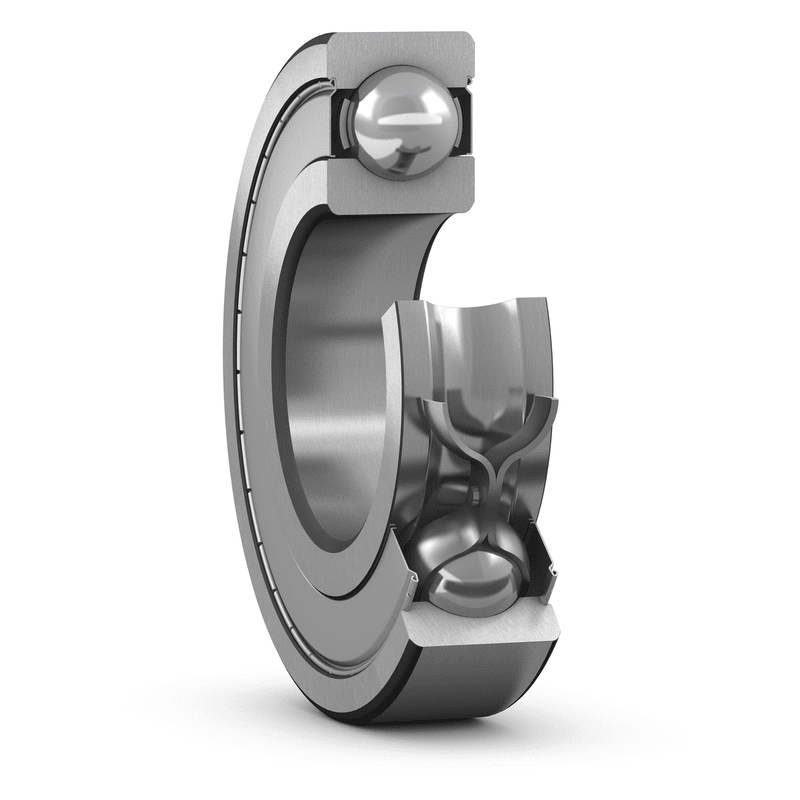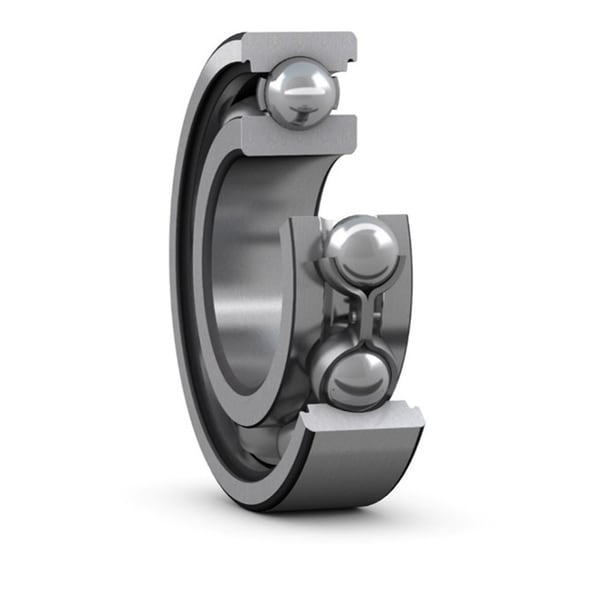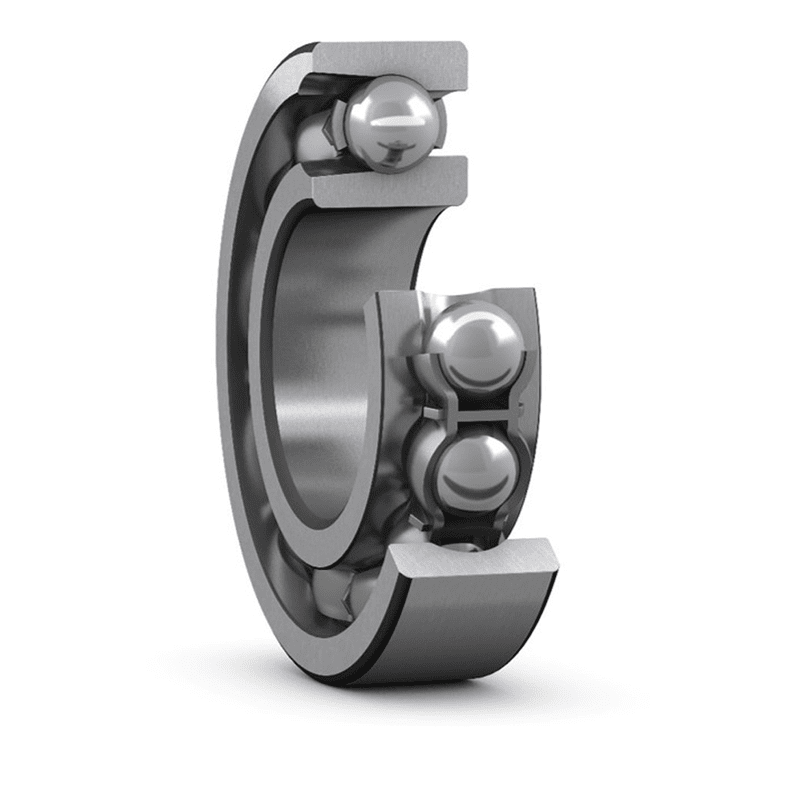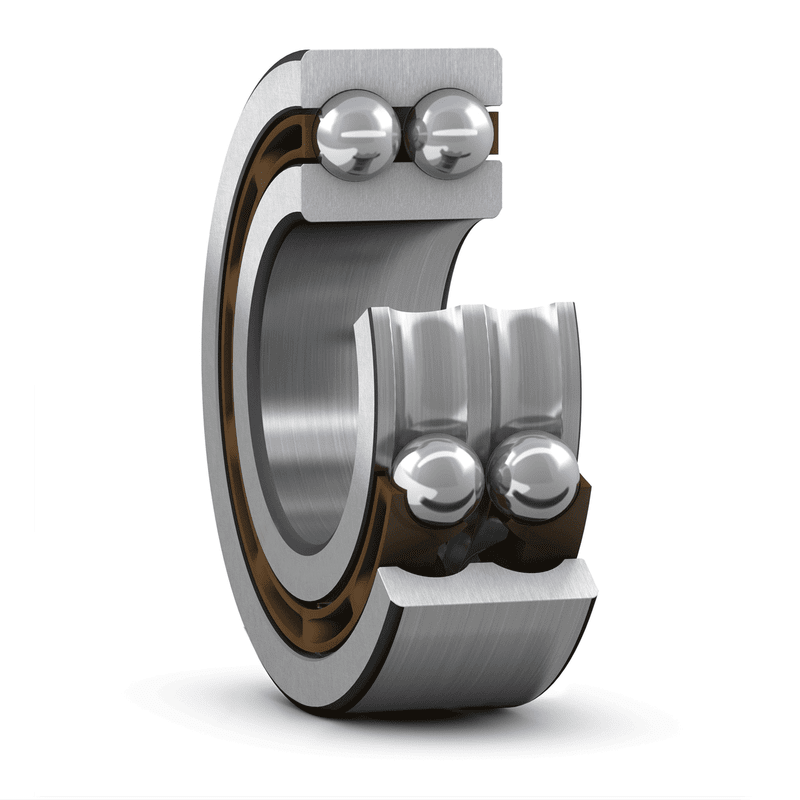With the development of science and technology, the spindle speed of machine tools is getting higher and the speed range is getting larger. Therefore, the requirements for the high-speed stability of bearings are also increasing. The temperature rise of SKF bearings is an important factor limiting the bearing speed. Normally, selecting the correct type, tolerance level, configuration, clearance (preload) size, lubricant, and lubrication method of deep groove ball bearings can improve the high-speed performance of rolling bearings to a certain extent.
For general machine tools, the lifespan of spindle components mainly refers to the service life of maintaining spindle accuracy. Therefore, it is required that the accuracy maintenance performance of SKF bearings meet the requirements of spindle component lifespan. For heavy-duty machine tools or strong cutting machine tools, the bearing capacity of deep groove ball bearings should be considered first.
Deep groove ball bearings are precision parts, so a cautious attitude is required when using them. High performance SKF bearings are used, but if not used properly, the expected performance effect cannot be achieved. Therefore, when using bearings, the following precautions should be taken.
(1) Dehydrogenation treatment. Deep groove ball bearings are treated with different heat treatment processes. After carbonitriding, hydrogen embrittlement is severe, and the cross-sectional shrinkage rate of bearing steel is very low. After dehydrogenation treatment, the performance of the workpiece is restored, and hydrogen embrittlement defects no longer appear in the workpiece after re quenching.
(2) Deep groove ball bearings undergo low-temperature tempering dehydrogenation. As the tempering time increases, the cross-sectional shrinkage rate increases, and after tempering for 8 hours, the cross-sectional shrinkage rate returns to its original level; In addition, the slow hydrogen evolution in the hot-rolled microstructure indicates that hydrogen embrittlement is related to the original microstructure.
(3) Natural aging dehydrogenation. When hydrogen containing workpieces are left at room temperature, supersaturated hydrogen gradually releases and precipitates, reducing the risk of hydrogen embrittlement. From the recovery of cross-sectional shrinkage rate of workpieces in two different processing states after 3 and 6 months, it can be seen that the normalized state recovers quickly and has basically recovered after 3 months; After 6 months of hot rolling, the cross-sectional shrinkage rate significantly recovered. This method indicates that the elimination of hydrogen embrittlement by natural aging is significant.

Single row deep groove ball bearings are the most widely used type of bearing. Provide closed (with sealed or dust cover) or open design. Open type be...

Stainless steel deep groove ball bearings can resist corrosion caused by moisture and other media. Provide closed (with sealed or dust cover) or open ...

A single row deep groove ball bearing with a ball loading notch has a ball loading notch on both the inner and outer rings, which is used to load more...

Double row deep groove ball bearings are very suitable for use in bearing configurations where the load-bearing capacity of single row deep groove bal...
 Copyright © 2002-2021 SKF Bearing Copyright Address:1-2F, Building 4, 1628 Lizheng Road, Lingang New Area, China (Shanghai) Pilot Free Trade Zone
Copyright © 2002-2021 SKF Bearing Copyright Address:1-2F, Building 4, 1628 Lizheng Road, Lingang New Area, China (Shanghai) Pilot Free Trade Zone